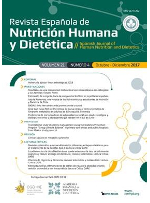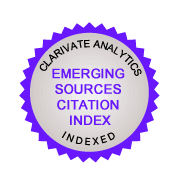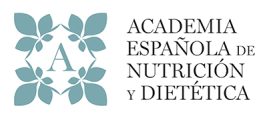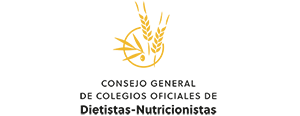Duration of Breastfeeding and its Relationship to Consumption of Ultra-Processed Foods and Sugar-Sweetened Beverages: An Early Childhood Prospective Cohort Study
DOI:
https://doi.org/10.14306/renhyd.29.1.2288%20Keywords:
Ultra-processed foods, Sugary drinks, Breastfeeding, Child Nutrition SciencesAbstract
Introduction. Consumption of ultra-processed foods (UPF) and sweet beverages (SB) is determined by several factors. The aim was to investigate the association between breastfeeding duration (BD) and consumption of UPF and SB in children under 6 years of age in Uruguay.
Methods. Analysis of data from a national survey, with 2287 children aged 6-48 months evaluated in 2013 (baseline) and in the same children in 2015 (follow-up). The consumption of UPF and SB was asked qualitatively referred to the previous week. Participants were asked about the number of months that the children received breastfeeding. Associations were assessed by crude and adjusted regression models, considering UPF/BA consumption at baseline and in the follow-up.
Results. At baseline, more than 75% consumed UPF and 20-30% SB. Lower SB consumption (p£0.036) and better overall quality of diet (p£0.028) were observed in those with breastfeeding ³6 months. Consumption of UPF and SB was associated with food insecurity (OR: 2.09-2.44 for UPF; 1.54-3.00 for BA).
At follow-up, almost all children consumed AUP and 15-20% SB. BD ³6 months was associated with lower SB intake in all children (p<0.05). However, lower UPF consumption was associated with longer BD only in children ³4 years old (OR: 0.52). SB consumption at follow-up was associated with SB intake at baseline (OR: 4.5), but this association was not observed with UPF. As in baseline, food insecurity was a risk factor for BA consumption at follow-up (OR: 1.43-1.75).
Conclusions. Duration of breastfeeding is a factor associated with lower consumption of SB in early childhood among Uruguayan children.
Funding: IBTAL Program from the World Bank (Loan 8116-ur).
References
Binns C, Lee M, Low WY. The Long-Term Public Health Benefits of Breastfeeding. Asia Pac J Public Health. 2016 Jan;28(1):7-14. 10.1177/1010539515624964.
Beckerman JP, Slade E, Ventura AK. Maternal diet during lactation and breast-feeding practices have synergistic association with child diet at 6 years. Public Health Nutr. 2020;23(2):286–94. 10.1017/S1368980019001782.
Rodgers RF, Paxton SJ, Massey R, Campbell KJ, Wertheim EH, Skouteris H, et al. Maternal feeding practices predict weight gain and obesogenic eating behaviors in young children: A prospective study. Int J Behav Nutr Phys Act. 2013; 10. 10.1186/1479-5868-10-24
Worobey J, Islas Lopez M, Hoffman DJ. Maternal Behavior and Infant Weight Gain in the First Year. J Nutr Educ Behav. 2009 ;41(3):169–75. 10.1016/j.jneb.2008.06.005
Soares MM, Juvanhol LL, Ribeiro SAV, Franceschini S do CC, Araújo RMA. Prevalence of processed and ultra-processed food intake in Brazilian children (6-24 months) is associated with maternal consumption and breastfeeding practices. Int J Food Sci Nutr. 2021; 72(7):978–88. 10.1080/09637486.2021.1885016
Ziesmann A, Kiflen R, de Rubeis V, Smith BT, Maguire JL, Birken CS, et al. The association between early childhood and later childhood sugar-containing beverage intake: A prospective cohort study. Nutrients. 2019;11(10):1–12. 10.3390/nu11102338
Poti JM, Braga B, Qin B. Ultra-processed Food Intake and Obesity: What Really Matters for Health-Processing or Nutrient Content? Curr Obes Rep. 2017; 6(4):420–31. 10.1007/s13679-017-0285-4
Issanchou S, Habeat consortium. Determining Factors and Critical Periods in the Formation of Eating Habits: Results from the Habeat Project. Ann Nutr Metab. 2017; 70(3):251–6. 10.1159/000471514
Uruguay Crece Contigo-Ministerio Desarollo Social, Instituto Nacional de Estadística UdelaR. Encuesta Nacional de Salud, Nutrición y Desarrollo Infantil. Primera Ronda. 2015. Disponible en: https://www.gub.uy/ministerio-desarrollo-social/comunicacion/publicaciones/encuesta-nutricion-desarrollo-infantil-salud
Rivera JA, Pedraza LS, Martorell R, Gil A. Introduction to the double burden of undernutrition and excess weight in Latin America. Am J Clin Nutr. 2014; 100(6):1613S-1616S. 10.3945/ajcn.114.084806
Organización Mundial de la Salud. Alimentación del Lactante y del Niño Pequeño. 2023. Disponible en: https://www.who.int/es/news-room/fact-sheets/detail/infant-and-young-child-feeding
Monteiro CA, Levy RB, Claro RM, de Castro IRR, Cannon G. Uma nova classifi cação de alimentos baseada na extensão e propósito do seu processamento. Cad Saude Publica. 2010; 26(11):2039–49. https://doi.org/10.1590/S0102-311X2010001100005
Ministerio de Trabajo y Seguridad Social, Instituto Nacional de Alimentación, Food and Agriculture Organization (FAO). Derecho a la Alimentación, Seguridad Alimentaria y Nutricional: Logros y Desafíos de Uruguay. 2015. Disponible en: http://dspace.mides.gub.uy:8080/xmlui/bitstream/handle/123456789/683/1674_Informe SAN.pdf?sequence=1&isAllowed=y
Duffy EW, Kay MC, Jacquier E, Catellier D, Hampton J, Anater AS, et al. Trends in Food Consumption Patterns of US Infants and Toddlers from Feeding Infants and Toddlers Studies (FITS) in 2002, 2008, 2016. Nutrients. 2019; 11(11). 10.3390/nu11112807
Relvas GRB, Buccini G dos S, Venancio SI. Ultra-processed food consumption among infants in primary health care in a city of the metropolitan region of São Paulo, Brazil. J Pediatr (Rio J). 2019;95(5):584–92. 10.1016/j.jped.2018.05.004
Spaniol AM, Da Costa THM, Bortolini GA, Gubert MB. Breastfeeding reduces ultra-processed foods and sweetened beverages consumption among children under two years old. BMC Public Health. 2020;20(1):1–9. 10.1186/s12889-020-8405-6
Cainelli EC, Gondinho BVC, Palacio D da C, Oliveira DB de, Reis RA, Cortellazzi KL, et al. Ultra-processed foods consumption among children and associated socioeconomic and demographic factors. Einstein. 2021; 19:eAO5554. 10.31744/einstein_journal/2021AO5554
Passanha A, Benício MHD, Venâncio SI. Influência Do Aleitamento Materno Sobre O Consumo De Bebidas Ou Alimentos Adoçados. Rev Paul Pediatr. 2018;36(2):148–54. https://doi.org/10.1590/1984-0462/;2018;36;2;00008
Fonseca PC de A, Ribeiro SAV, Andreoli CS, de Carvalho CA, Pessoa MC, de Novaes JF, et al. Association of exclusive breastfeeding duration with consumption of ultra-processed foods, fruit and vegetables in Brazilian children. Eur J Nutr. 2019;58(7):2887–94. 10.1007/s00394-018-1840-9
Dirección General de Educación Inicial y Primaria, ANEP. Programa de Alimentación Escolar. Available from: https://www.dgeip.edu.uy/inicio-pae/
Senado y Cámara de Representantes de la República Oriental del Uruguay. Protección de la salud de la población infantil y adolescente a través de la promoción de hábitos alimenticios saludables. 2013. Disponible en: https://www.impo.com.uy/bases/leyes/19140-2013
Oberle MM, Romero Willson S, Gross AC, Kelly AS, Fox CK. Relationships among Child Eating Behaviors and Household Food Insecurity in Youth with Obesity. Child Obes. 2019; 15(5):298–305. 10.1089/chi.2018.0333
Kastorini CM, Markaki I, Tsiampalis T, Critselis E, Petralias A, Linos A. Dietary patterns and food insecurity of students participating in a food aid programme: the Mediterranean perspective. Eur J Public Health. 2021;31(1):143–50. 10.1093/eurpub/ckaa178
Ares G, Curutchet R, Ferre Z, Giménez A, Rossi M. Documentos de Trabajo Resultados de la Encuesta sobre Alimentación y Bienestar. 2015. Disponible en: https://www.colibri.udelar.edu.uy/jspui/bitstream/20.500.12008/7177/1/DT E 2015-08.pdf
Specht IO, Rohde JF, Olsen NJ, Heitmann BL. Duration of exclusive breastfeeding may be related to eating behaviour and dietary intake in obesity prone normal weight young children. PLoS One. 2018;13(7):1–11. 10.1371/journal.pone.0200388
Kral TVE, Chittams J, Moore RH. Relationship between food insecurity, child weight status, and parent-reported child eating and snacking behaviors. J Spec Pediatr Nurs. 2017; 22(2). 10.1111/jspn.12177
Cunningham TJ, Barradas DT, Rosenberg KD, May AL, Kroelinger CD, Ahluwalia IB. Is maternal food security a predictor of food and drink intake among toddlers in Oregon? Matern Child Health J. 2012;16 Suppl 2(0 2):339–46. 10.1007/s10995-012-1094-8
Published
How to Cite
Issue
Section
License
Copyright (c) 2020 Lucia Pienovi, Carmen Marino Donangelo

This work is licensed under a Creative Commons Attribution-NonCommercial-ShareAlike 4.0 International License.











